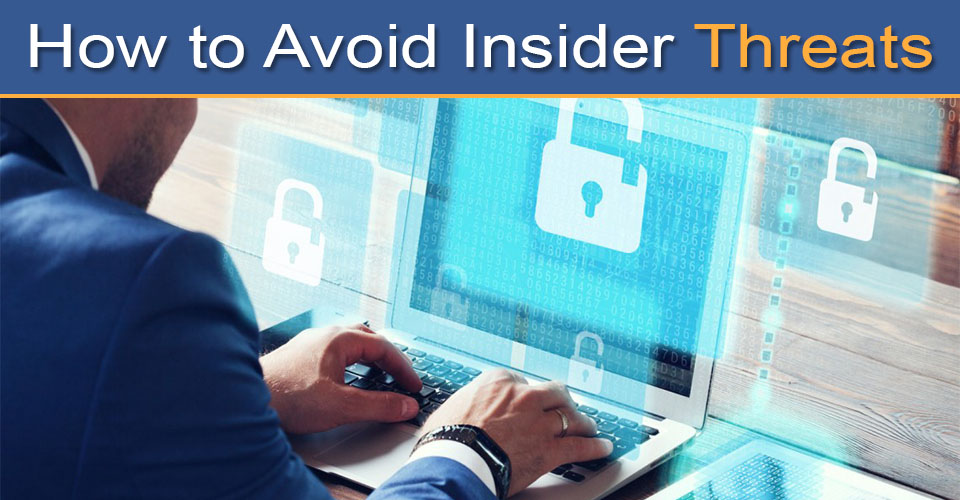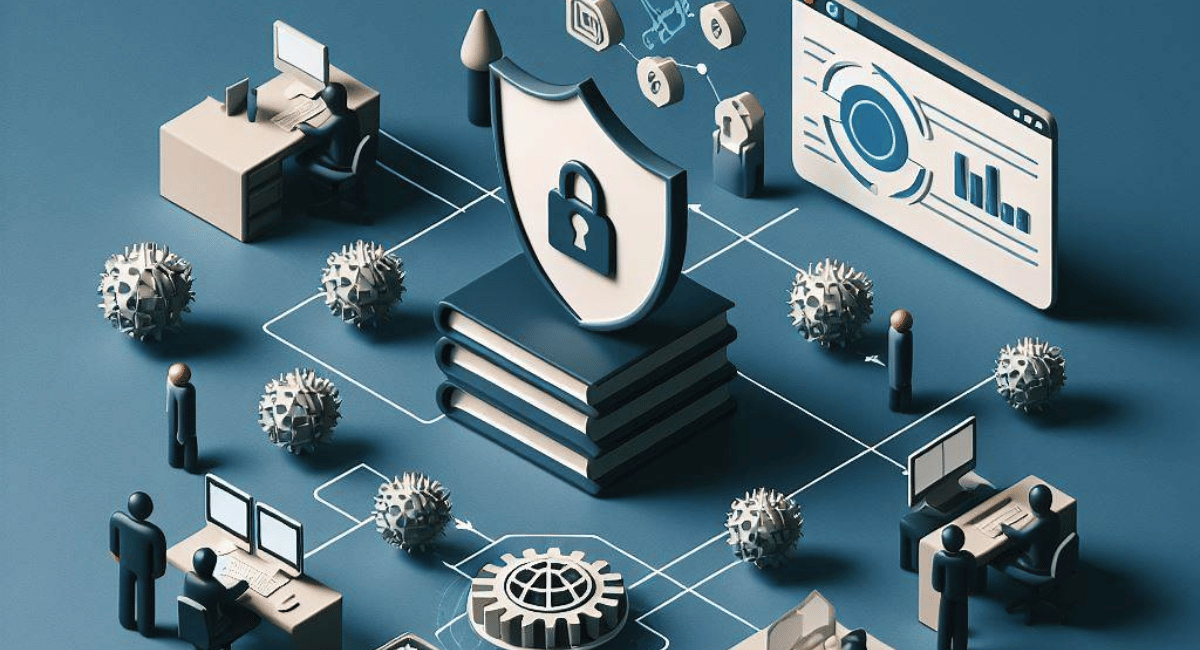An insider threat is exactly what it sounds like, a threat within inside, in other words, this article is themed on the importance of USB Block software and how it fits in the overall picture. What is the inside? Usually it refers to data security threats that originate within an organization. A rogue insider is usually an employee with bad intentions. However, it doesn’t necessarily have to be an employee presently working in a company, it could a former employee or a board member who has access to important corporate data.
What’s more, contractors and third-parties also cannot be ruled out, as they too may become a security risk if the data they seek to steal is significantly valuable.
Why do data leaks occur?

The reasons could be many and widely varied. It could be an employee dissatisfied with his or her working conditions. Other’s may be appealed by the fact there’s potential to make a lot of money by stealing such data. Nonetheless, insider threats are more of a risk than say an attack by hackers. One may begin is stealing data worth the risk? The answer is yes, rogue organizations have, on several occasions, offered employees working in a competitor organization a hefty salary, bonuses and benefits too lucrative to turn down, that combined with their present unsatisfactory working conditions, becomes a strong motivation – and almost like a dogmatic belief – that they have the right to steal the data and use it for self-gain.
Insider Threats can be impossible to detect!
Whether you want to hear it or not, insider threats are impossible to detect. This is because, even high-level executives will break. To make matters worse, CEO have no choice but to allow executives some or all access to sensitive data, and there’s no way around it. As we have already witnessed in the snowden’s case, he was able to steal secret NSA files in a very strategic way, despite the NSA having extremely strict security, Edward Snowden was able to get away with secret NSA files. Thus, no matter what organizations do, regardless of preventive steps they take, they will not be able to stop insider threats.
More about: USB Block – Block Access To Unauthorized USB Drives To Prevent Data Loss
What are the options?
Most organizations have to spend millions of dollars to have software developed the restricted access, monitored the flow of data within company servers. However, since these are custom made software, there are bound to be some quirks within the software itself. On a different note, smaller organizations can’t afford to spend that kind of money, and thus have no choice but to risk it all. Nonetheless, most recently, a new data leak prevention software has been developed for the market, a one of kind and the only one available that prevents data leaks, this software is known as USB Block. USB Block can prevent data leaks from all sources, whether it is USB drives, WIFI connections, CD drives or any other type of storage device, with USB Block, you can set permissions to allow certain users, some access, no access or all access, it also gives the users the ability to monitor the flow of data in and out of company computers.
Best Ways To Prevent Insider Threats
Insider threats can be prevented by implementing a comprehensive security strategy that includes:
1. Establishing clear policies and procedures that define acceptable use of company resources and access rights.
2. Implementing effective user authentication and authorization protocols.
3. Implementing effective monitoring and logging of user activity.
4. Establishing a comprehensive system of data security and encryption.
5. Educating users on the risks of insider threats and the importance of security
First Line Of Defense For Insider Attacks

The first line of defense for insider attacks is to establish clear policies and procedures that define acceptable use of company resources and access rights. This includes defining who can access which resources, setting up user authentication and authorization protocols, and monitoring user activity. Additionally, educating users on the risks of insider threats and the importance of security can help to mitigate the risk of an insider attack.
Causes Of Insider Threats
Insider threats can be caused by a number of factors, including malicious intent, negligence, or a lack of security awareness. Malicious intent can include stealing confidential information, sabotaging systems, or using company resources for personal gain. Negligence can include failing to properly secure systems or failing to follow security protocols. A lack of security awareness can mean a user is unaware of the risks associated with their actions, or may not be aware of the security measures in place.
Different Types Of Insider Attacks
1. Malicious Insider Attack: This type of attack involves an insider who deliberately attempts to access, modify, or destroy sensitive information or systems.
2. Negligent Insider Attack: This type of attack involves an insider who fails to follow security protocols or fails to properly secure systems.
3. Social Engineering Attack: This type of attack involves an insider who is tricked into providing access to sensitive information or systems.
Most Common Insider Threat
The most common insider threat is negligence or accidental compromise of sensitive information. This can include failing to follow security protocols, failing to properly secure systems, or simply not being aware of the potential risks of sharing sensitive information.
Support You Can Give To Prevent Internal And External Threats
To prevent internal and external threats, organizations should implement a comprehensive security plan that includes:- Regular security audits and assessments
– Regular employee training on security protocols and best practices
– Restricting access to sensitive data and systems to authorized personnel only
– Implementing strong authentication and encryption measures
– Monitoring user activity and suspicious behavior
– Utilizing a multi-layered security approach to protect data and systems from malicious actors
Reason to Avoid Insider Trading
Insider trading is illegal because it involves the misuse of confidential information for personal gain. Insider trading can lead to a loss of trust in the stock market, as well as legal repercussions for those involved. Additionally, insider trading can create an unfair advantage for those with access to privileged information, which can lead to market manipulation and other unethical practices.
What Is Insider Threat Management?

Insider threat management is the process of identifying, assessing, and mitigating the risks posed by insiders to an organization’s information and systems. This includes identifying potential malicious actors, understanding their motives, and implementing security measures to protect against them. It also involves monitoring for suspicious activity, responding to incidents, and taking corrective action when necessary.
Way Business Leaders Reduce Insider Threats
Business leaders can reduce insider threats by implementing strong security measures, such as access control and authentication systems, to protect sensitive data and systems. They should also have policies in place to monitor and respond to suspicious activity, as well as establish clear protocols for handling incidents. Additionally, they should regularly review and update their security measures to ensure they are up to date and effective. Finally, they should provide training and education to employees on the importance of security and how to recognize and respond to potential insider threats.
Methods Of Threat Detection
1. Network Intrusion Detection Systems (NIDS): A NIDS monitors network traffic for suspicious activity and can detect intrusions, malware, and other malicious activity.
2. Host Intrusion Detection Systems (HIDS): A HIDS monitors a single host or computer for malicious activity.
3. File Integrity Monitoring (FIM): FIM monitors changes to critical files and system configurations for malicious activity.
4. Access Control: Access control systems can help limit access to sensitive data and systems to only authorized personnel, which can help prevent insider threats.
Methods To Detect/Prevent Cybersecurity Threats
1. Firewalls: Firewalls can be used to detect and block malicious traffic from entering a network.
2. Anti-virus/Anti-malware Software: These programs can detect and block malicious software from infecting a system.
3. Intrusion Detection Systems (IDS): IDS can detect malicious activity on a network by analyzing network traffic for suspicious activity.
4. User Education and Training: Teaching users how to recognize and avoid potential threats can help reduce
Best Practices Against Insider Threats
1. User Education and Training: Educating users on the risks of insider threats and how to identify and report them is essential for preventing attacks.
2. Access Controls: Establishing access controls to limit user access to only what is necessary for their job role can help reduce the risk of an insider threat.
3. Monitoring and Auditing: Regularly monitoring and auditing user activity can help identify suspicious behavior and detect insider threats.
Major Motivators For Insider Threats
1. Financial Gain: Financial gain is the most common motivator for insider threats. This can include stealing sensitive data to sell on the black market or using privileged access to commit fraud.
2. Revenge: Some insiders may have a grudge against the organization and use their access to cause disruption and damage.
3. Ego: Some people may have an inflated sense of their own importance and use their access to show off or prove themselves.
